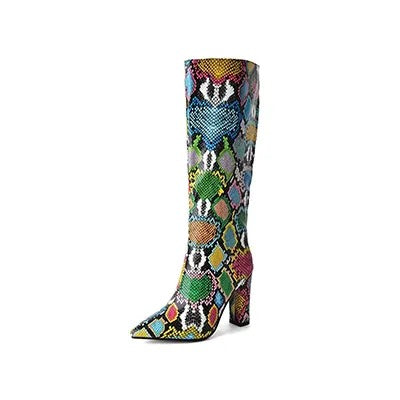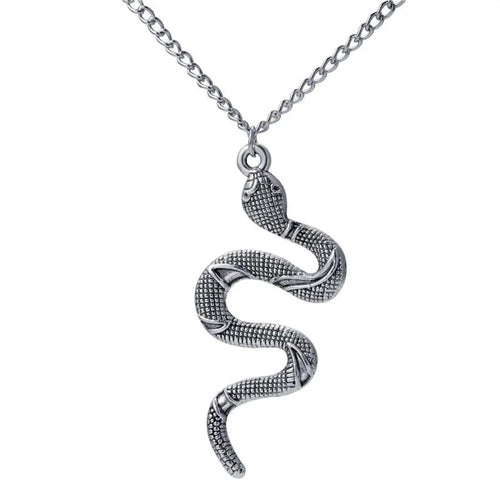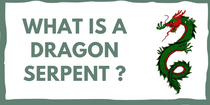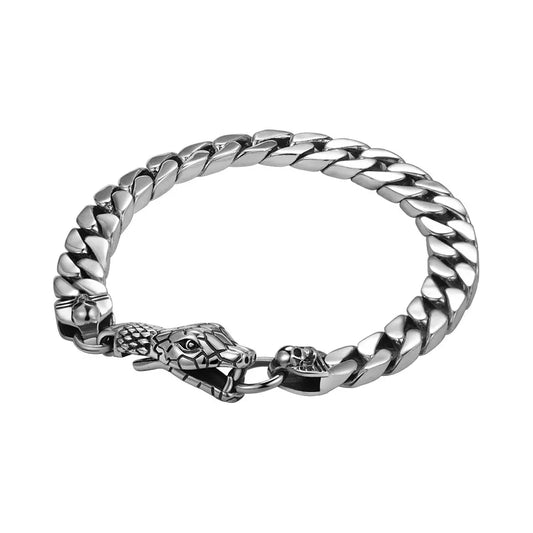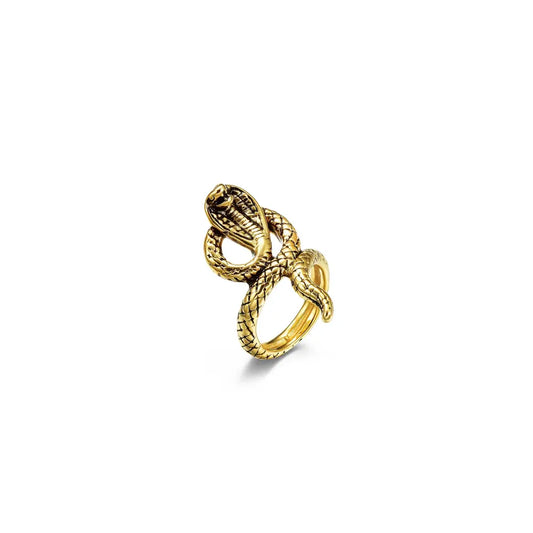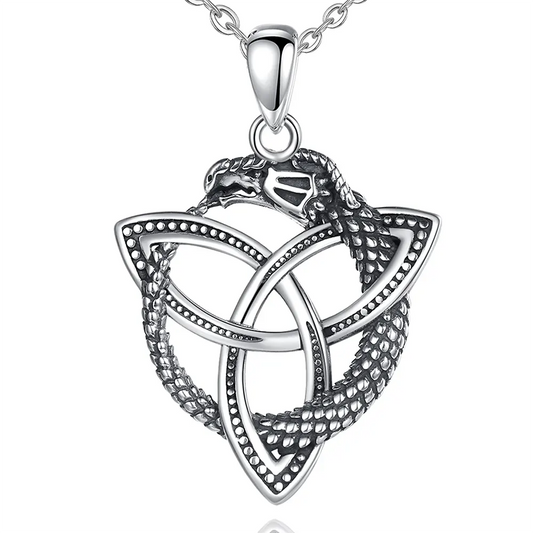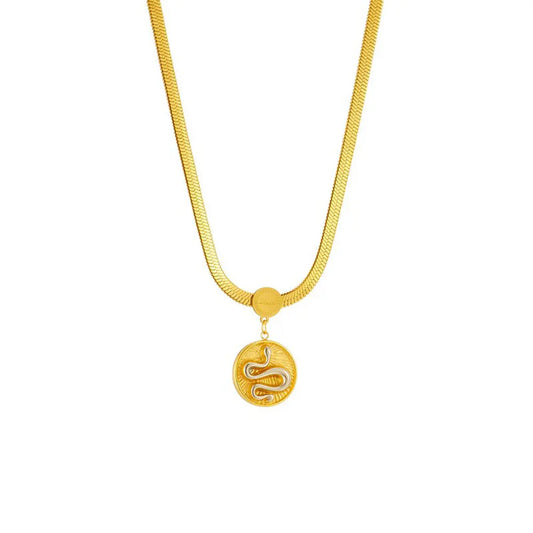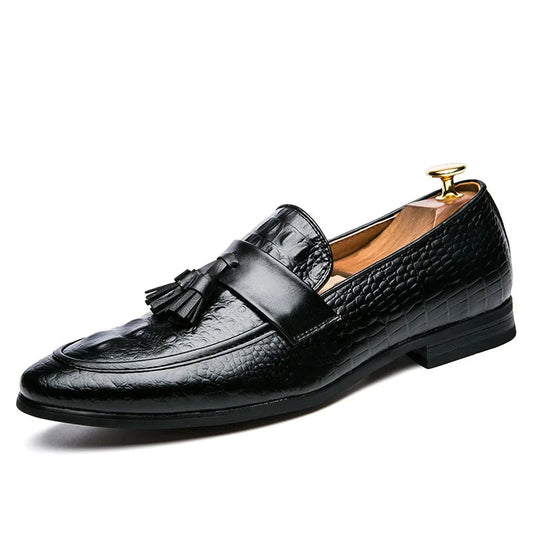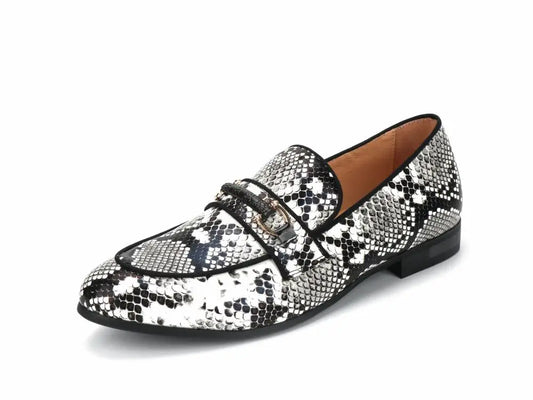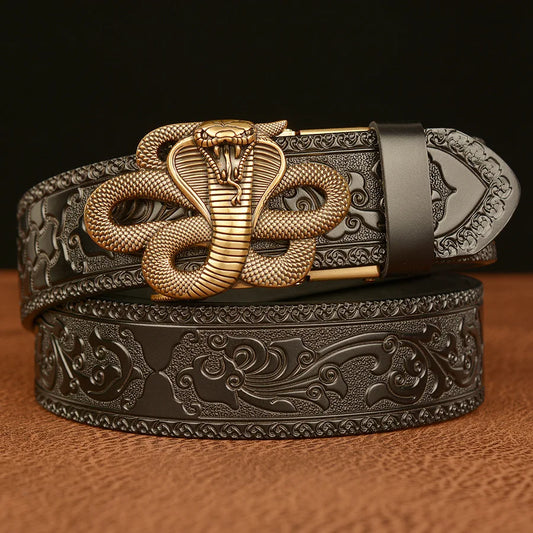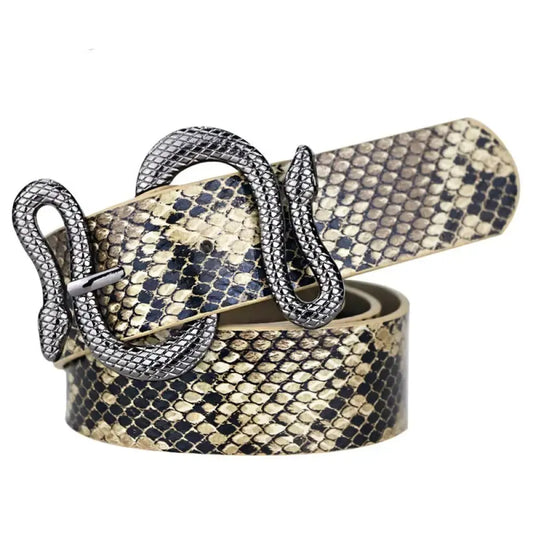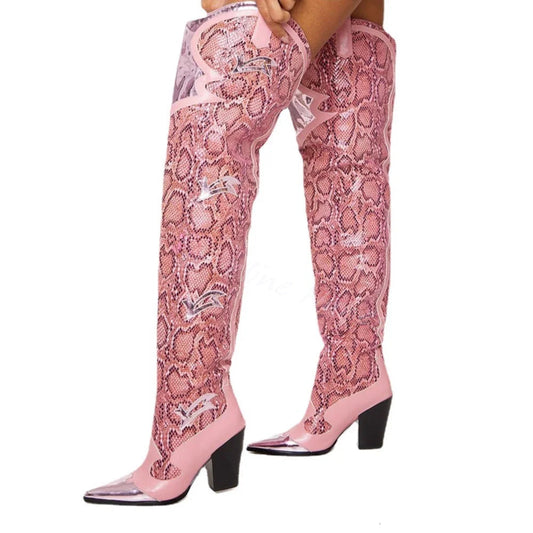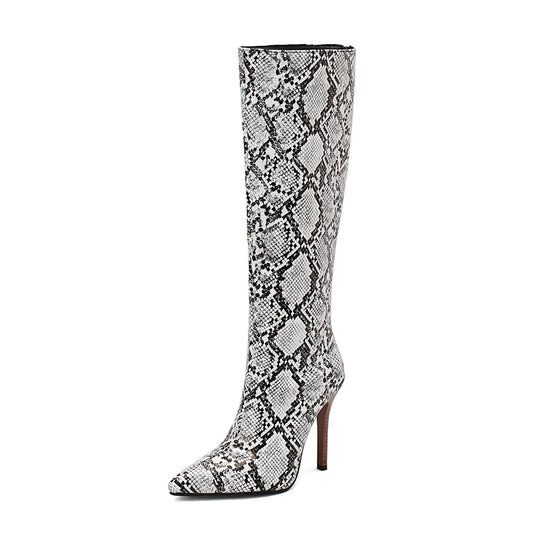The Basilisk is a mythical creature most often represented as a giant snake 🐍. It is even said that this enormous beast is the king of snakes. Being one of the most feared mythological monsters, the Basilisk would have the power to kill with a simple glance, like the gorgonians of Greek mythology.
Although it was popularized by J.K. Rowling and by its appearance in the second film of the Harry Potter saga entitled The Chamber of Secrets, this monstrous snake has been part of European mythology and medieval folklore since ancient Greece 📖. This mythical beast is notably present in Romanian culture under the name of Vasilis. And the king of snakes is also very often represented with feathers and wings.
From the origin of the myth of this legendary monster to the way to kill it, through its appearance in Harry Potter, in this article, you will discover everything there is to know about Basilisk! 🔎

1. WHAT IS A BASILISK SNAKE?
First of all, it is important to know that there are two types of Basilisk. The first, the most famous, is a giant snake. This is the first and oldest representation of the Basilisk. It can be found in the second Harry Potter movie 🧙🏻.
The second representation of Basil is in the form of a half-snake half rooster creature 🐓. This one is known as a basilisk rooster...Logical?
Regardless of its appearance, in all legends, Basilisk is considered a fierce predator and extremely hostile, especially towards humans. It is often described as a legendary creature, representing evil in its purest form 😈.

Even though they call him "The King of Snakes," some myths mention the existence of several Basilisks using this term in the plural 🤔. It is, therefore, just as correct to say "the" basil, or "one" basil.
Although they prefer to eat animals such as goats and deer, the Basilisk can just as easily throw itself at other prey from counts and legends: unicorns, pegasus, fairies, ... As a man-eater, they do not hesitate either to visit peaceful villages at night to find their next meal 😨.

2. THE BASILISK SNAKE
Today we know the Basilisk in the form of a giant snake, as the Harry Potter saga popularized it. But this representation existed long before J.K. Rowling wrote his novels 📚. Indeed, it is the very first form that the Basilisk took in myths and legends.
The first mentions of this giant snake date back to antiquity. Legend has it that the Basilisk was born from the severed head of Medusa, killed by the Greek Hero Perseus ⚔️. But some other sources claim that a Basilisk was born from the egg of a toad or snake, brooded by a rooster.
Speaking of the serpent king, if you are interested in reptiles, then I advise you to discover our magnificent collection of snake rings!

3. A FEATHERED BASILISK?
It is only from the Middle Ages onwards that Basilisk began to be represented as a creature half-bird, half-snake. This chimera monster (an assembly of two animals) called Basilirooster (or Basilic rooster) would also be born from one of a toad egg 🐸 or a snake, brooded by a rooster.
The Basilirooster is often confused with the Cockatrice. This latter is also a monster half-bird and half-reptile, but with the difference that it is born from a rooster's egg (yes yes, from a rooster, so it is "very uncommon" 😅), brooded by a snake or a toad. Moreover, even if they are very similar, the two monsters still have differences. The Cockatrice is a different variety from the Basilirooster.
"Cockatrice" became synonymous with "Basilisk" because of a translation of De proprietatibus Rerum by Bartholomeus Anglicus, written in 1260 🖋️. The 1397 adaptation by John Trevis also replaces the Latin word Basiliscus with Cockatrice.

4. ORIGIN OF BASILISK AS A MYTHICAL MONSTER
Like many well-known fantastic creatures (werewolves, vampires,...), the Basilisk finds its origin in the cultures and mythologies of certain ancient peoples 💭.
Luckily for us, this serpent has never walked the Earth! It is only a legend to which many people have contributed 🤨. Nevertheless, it is fascinating to note that during antiquity and the Middle Ages, people strongly believed in its existence. Some even worshipped him as a god.

4.1. COBRA AND BASILISK
Like all legends, those of the Basilisk is inspired by the real world. Some have speculated that the cobra might be the source of the myth. Indeed this fearsome snake has some of the characteristics of the mythical creature: especially the ability to kill from a distance 🎯 (even if this is done by spitting venom, rather than by a deadly glance!).
The cobra's ability to maintain a threatening upright posture, as well as it's the very dangerous bite, also makes it a perfect candidate to inspire the legend of the evilest snake in mythology. Also, cobras are often killed by mongooses, which refers to weasels that can kill a Basilisk 🩸. Although these two mammals are not directly related, they do have similarities, especially in the way they hunt.
Finally, as its name suggests, the Royal Cobra is often associated with royalty and power 👑, as is the Basilisk. During ancient Egypt, the cobra was also associated with magic.
Like the Basilisk, the snake is perceived in our culture as a dangerous animal representing deviousness 😈. This negative view of the snake is obviously due to Christian beliefs, which even assimilated this animal to the devil himself. In the myth of the Garden of Eden, it is a snake that deceives Eve and then Adam.

4.2. HISTORY AND FORMATION OF THE LEGEND OF THE BASILISK
One of the first accounts mentioning the Basilisk comes from Natural History, a work of prose written by the naturalist Pliny, the Elder in the year 79. It describes the Catoblepas, monstrous creatures resembling cows 🐄, and having the power to kill with their eyes. In this book, Pliny describes the Basilisk as having the same power as the Catoblepas.
"He frightens away all snakes with his hissing, and does not crawl like other snakes, but moves forward with his head and half of his neck raised. He kills bushes not only with his touch but also with his breath. It burns the grass and bursts the rocks. Its effect on other animals is disastrous. It is believed that once he was killed with a spear by a man on a horse, and the poison from the spear killed not only the rider but the horse as well."
There is also the author Bede the Venerable, who was one of the first to popularize the legend that a Basilisk is born from an egg brooded by an old rooster. Then, other authors explain as a condition that the constellation Sirius must be visible in the sky to have the birth of a snake basilisk🌌. Finally, it's a bishop named Isidore of Seville, who names Basilisk as the king of snakes!
The philosopher Alexander Neckham is the first to say that it is not the look but the "corruption of the air" that is the deadliest weapon of the Basilisk. The physician and philosopher, Pietro Abano, later developed this theory. Leonardo da Vinci himself described in his fantastic bestiary, the white tiara-shaped mark 💎 on Basilisk's head.

5. BASILISK DESCRIPTION
Although throughout its long history, the descriptions of the Basilisk have evolved, there are still two that have remained the most common.
5.1. SNAKE BASILISK
Snake Basilisk is a giant ophidian covered with green scales, whose mouth is lined with fangs up to the size of a dagger 🗡️. The body of Basilisk is often surmounted by a membranous ridge. In some medieval grimoires and bestiaries, it is written that Basilisks males have feathers on their heads, while females have large horns.
Its movement is different from that of other snakes: rather than crawling with its belly glued to the ground ❌, it moves forward with the front half of its body erect.

Snake-shaped Basilisk usually reaches gigantic proportions. The most imposing can reach a length of about twenty meters, and a width of about 1m50 😱. Medieval travelers described him as a large creature with fiery breath and a terrifying roar.
Aquatic 💧, the beast prefers humid places: it is therefore found in undergrounds, caves, abandoned dungeons, near rivers, etc. Beware of those who have fun ricocheting off the water at nightfall! Some myths also say that these legendary creatures can haunt a labyrinth.
It is said that the best way to protect yourself from Basilisk is to wear a jewel in his likeness... We've never tried, but maybe this snake ring Basilisk will scare the beast away when they see the head of one of his fellow-creatures hanging stylishly from your finger!
5.2. THE BASILIROOSTER 🐓
In this representation, the body of the Basilirooster It has a rooster's head covered with feathers and is supported by two rooster's legs with talons and powerful claws. Wings of a serpent dragon or bat 🦇 protrude from its shoulders, and a long serpentine tail completes its nightmarish appearance. Often, the plumage of this mythical animal is very colorful and can take on blue or red shades.
Although this illusion is fearsome because of its different powers, it can be very small. The first stories of the monster describe it as being only 30cm long! 😂
There is a rarer description of this hybrid creature 🤔. In some legends, this monster is described as a lizard with the head of a rooster, the tail of a snake, and eight legs of a rooster.
Yeah, I know this is getting weird...
6. THE POWERS OF THIS FANTASTIC SERPENT
Like any self-respecting mythological creature, the Basilisk is not devoid of powerful powers that make him particularly dangerous. This monster is one of the most feared beasts in all European folklore 😓. No matter if it is a snake or a Basilirooster, this beast can kill you or seriously injure you in five different ways, without even getting close to you to devour you!
So before you approach this monster to face its mouth full of sharp teeth, or its beak and its rock-hard claws, let's see what you'll have to overcome!
6.1. THE DEADLY LOOK OF THE BASILISK
The most famous weapon of the Basilisk is his deadly look. Although the power of his eyes is discussed in all the myths about him, if you cross, his gaze is finished with you 😵. Thanks to the latter, the Basilisk would have the ability to break stones in half, fading plants, and instantly kill any living creature that crosses his eyes. Remember this last point...
We can see here the parallel with Medusa, whose eyes could petrify anyone who crossed his look 👀. No wonder considering that the Basilisk is supposed to have been born from the head of Medusa!
6.2. TOXIC BREATH
If by chance, you manage to escape the monster's look, you'll have to face his toxic breath 🤢. It is so terrible that it can wilt plants and paralyze a grown man. Some experts even report that the monster can spit fire through its nostrils (while we're at it!).
6.3. BASILISK VENOM HOOKS
The venom contained in the monster's fangs is its third deadly asset ☠️. It is considered to be the most venomous creature that has ever lived. It is so poisonous that if the beast drinks from a well, the water remains polluted for centuries, resulting in the death of the one who drinks it. A single scratch made by a Basil hook can cause immediate death.
Basil also can project its toxic venom up to 10 meters. In a medieval story, a warrior on horseback managed to impale a Basil on his spear and kill it ⚔️. Unfortunately, the venom of the blast was so powerful that it infected the spear, then the warrior and his horse, causing their deaths.
It is said that only the tears of a phoenix are an effective remedy against the venom of a Basilisk.
6.4. STRIDENT WHISTLING
You escaped the beast's eyes, protected yourself from its breath, and avoided its deadly spray of venom. Well done, well done! But will you be able to survive its whistle?
Basilisk whistling can drive men crazy, paralyze, and even kill them if they are too exposed to it 🤯. That's why the Basilisk is also called Sibelius ("whistle") in Latin. We don't know if its deadly effect is due to noise so strident that the eardrums explode, or if the whistling of Basil has magical properties.
In any case, what is sure is that this superb ring snake basilisk silver in the likeness of the king of the snakes does not emit its mortal! On the other hand, her gaze could hypnotize you...
6.5. EVIL AURA OF BASILISK
You've successfully avoided all of Basil's attacks, and now you're close enough to him to finally face him! But you've condemned yourself by getting so close to him.
The Basilisk is such an evil and supernatural being that he constantly radiates an aura of death around him. He is not only a threat to mankind, but also to life itself. This monster leaves a path of destruction wherever he goes. Plants are withered 🥀 and burned by his stench and evil spirit, birds catch fire if they get too close to him, and even other snakes escape him.
There is only one plant capable of resisting the aura of Basil: 🌿herb of grace. This plant is, therefore, ideal for treating the wounds acquired during a confrontation with the monster.

7. KILLING A BASILISK
Despite their terrible powers and the fact that they are immortal, these mythological creatures are not unstoppable.
7.1. THE MIRROR AND THE BASILISK
According to some legends, these creatures can be killed by looking in a mirror. If you find yourself in the presence of one of these fearsome chimeras, only one of these weapons can save you. As its gaze is deadly to all living things 💀, the monster will also perish if forced to look into the eyes of its reflection.
It is said that Alexander the Great ordered that a shield polished like a mirror be forged for him so that he could protect himself from the Basilisk during his conquest to the Indies 🛡️. Saint George also defeated a Basilisk by holding his shield so that the beast could see his image, causing his death.
7.2. BASIL AGAINST WEASEL
The weasel is one of the two animals that the Basilisk fears. It is immune to its fatal look, and can even survive a venomous bite if given proper medical treatment. Many old texts advise Basil hunters to throw a weasel into the beast's lair or to bring the Basil in front of one of these small mammals. However, even if the weasel manages to kill the monster, it is often fatal to it too.
7.3. ROOSTER CROWING AND ITS EFFECT ON BASILISK
Perhaps it is related to the way it is born, but the Basilisk is very vulnerable to the crowing of the rooster 🐓. The rooster can either scare him away or kill him according to the legends. This belief led medieval travelers to always take roosters with them for protection.
8. THE BASILISK SNAKE IN HARRY POTTER
A) APPARITION OF THE SNAKE KING IN HARRY POTTER
If Basilisk is so famous today, it is thanks to his appearance in the Harry Potter saga. Who has never heard about Harry Potter and the magical world created by J.K. Rowling in his books? The world-famous saga features the most spectacular mythical animals 😮.
The most memorable scene from the second Harry Potter movie, The Chamber of Secrets, although fatally poisoned by Basilisk, Harry manages to use the beast's hook to stab Tom Jedusor's diary 📓. There is also a mention of Basil in the films The Fantastic Animals.
In the universe of J.K. Rowling, the Basilisk has more or less the same characteristics as in the legends of our world. The beast's gaze is deadly, and only tears of Phoenix can serve as an antidote to its venom 🧪. This venom is so powerful that it is one of the few substances that can destroy a Horcrux, an object in which Voldemort placed part of his soul. It is said that a Basilisk from the world of Harry Potter can live up to 900 years. He is, however, very vulnerable to cock crowing.
Only the craziest black mages dare to try to raise a Basilisk. Because even if you can control the beast by speaking the Parseltongue (snake language)🐍 , Even Aragog and Acromantula fear this fantastic animal!
B) BASILISK: THE TWO HARRY POTTER MONSTERS
In the Harry Potter universe, there are two Basilisks. The first of these mythical creatures is that of Hero, the foul, a Greek sorcerer adept of black magic 😈. The latter is the first sorcerer to discover that a Basilisk is born from a hen's egg brooded by a frog. His knowledge and his ability to speak the Parseltongue allowed him to raise the first Basilisk in history.
The creature in the Chamber of Secrets is a female Basilisk. He was placed there by Salazar Slytherin himself, with the intention that one day he could purge Hogwarts of the Muggle-born 💀. The Basilisk in the Chamber can only be controlled by Salazar's direct heir: Tom Jedusor. Wizards speaking, the Parseltongue can understand it but not control it.
This Basilic made several victims in Hogwarts by killing or petrifying them (including Hermione and Mimi Whining) before Harry Potter killed him. During his fight with the beast, Harry was poisoned by one of his hooks and only survived thanks to Fawkes the Phoenix of Dumbledore, who is staring at Basil and heal Harry's wound with his tears 💧.
9. ROMANIAN BASILISK
There is a monster of Romanian folklore, similar to Basilisk: The Basilisk. This monster looks more like the twisted form of Basil. He was born in a poem from the 1970s. The legendary folk-rock band Phoenix then transformed it into the song 🎶.
The Basilisk is very similar to Basilic: it has a toxic breath that can kill instantly and a deadly look. However, although seeing its reflection in the mirror can kill it 😵, it doesn't seem to fear weasels or roosters.
This fantastic creature is still an exotic monstrosity in Romanian folklore today 👹, while for the rest of Europe, Basil is just another fantastic monster.

10. BASILISK SYMBOLISM
The Basilisk generally represents evil and is a symbol of death. Christianity sometimes represented the Basil ( like other snakes) as a demon or an apparition of the devil himself 👿. As a result, it was often depicted in wall paintings or sculptures, especially in Eastern Europe. It is not uncommon for the Basilisk to be depicted killed or beaten by a Christian knight, to symbolize the ability to defeat evil.
Despite its cruel nature, this beast also became over time a symbol of power. In particular, the royal power 👑, which like the Basilisk, strikes down those who oppose him.
11. BASILISK IN ALCHEMY
In alchemy 🧪, Basil represents the destructive force of fire, which decomposes the elements to allow the transmutation of metals. It is said that the power of Basilisk is still active even after his death. When the monster is reduced to ashes, the ashes retained magical properties much in demand by alchemists in the 13th century 🌟. One legend describes an alchemist using the monster's ashes to turn silver into gold. At the same time, other myths suggest that the ashes are an important ingredient in the making of the legendary Philosopher's Stone.
12. ETYMOLOGY OF THE WORD "BASILISK"
The term "basilisk" comes from the Greek βασιλίσκος (basilisks), which translates as "little king." In Latin Basiliscus
The etymology of the term "Cockatrice" is more complicated to know 🤔. This term appeared in many ancient European languages in the Middle Ages.
It is common to use the term basil or Cockatrice to refer to the same animal. But these two words refer to different creatures ❌ even though they are very similar.
13. REFERENCES TO SNAKE BASILISK
A) LITERATURE
The Basilisk has been an animal in literature for centuries. Geoffrey Chaucer introduced a basilirooster (as he called it) in his Canterbury Tales, as did William Shakespeare in Richard III 📖. These two works mark the passage of Basilisk from the realm of science to the realm of folklore.
The poet Percy Bysshe Shelley in his Ode to Naples alludes to Basilisk:
"Be like the imperial Basilisk,
Kill your enemy with invisible wounds!
Watching the oppression, even to this dreadful risk,
She was horrified that she's going from the Earth's drive.
Fear not, but watch, for free men grow more powerful,
And the weaker slaves, looking at their enemy."
Basil is also mentioned in chapter 16 of Voltaire's Zadig. Bram Stoker alludes to the deadly gaze of this beast in the fourth chapter of Dracula when the main character makes his first attempt to kill the vampire count. ⚔️
In contemporary times, the most famous Basil comes from the Harry Potter series of novels. In the second volume: Harry Potter and the Chamber of Secrets, the author J. K. Rowling presents the Basilisk as a creature under the control of evil sorcerers. 🧙♀️
B) VISUAL ARTS
The Basilisk is a common ornament in great works of art, especially from the 14th to 16th centuries in Europe. Although the monster rarely appears as an artistic masterpiece, it is often found among demons in architectural engravings of large cathedrals ⛪, or the decoration of family coats of arms.
14. BASILISK IN MODERN FANTASY
Fantasy culture is booming nowadays. This is partly due to the popularity of certain series such as Game of Thrones or Vikings, as well as video games such as God of War, where the Hero faces a Basilisk ⚔️🐍. However, Basil is only rarely present in video game works in general.
We can note the appearance of Basil in various role-playing games such as Dungeons and Dragons and Magic: The Gathering 🔎. But most books and video games are simply creating monsters that borrow only part of their appearance or powers from Basil.
When a Basil is present as is in a fantasy work, it often appears as a giant snake. The Basilirooster is only rarely represented ❌.

15. THE BASILISK, A LIZARD IN REAL LIFE?!
There is indeed a real Basilisk! Well, certainly, this one doesn't have the powers of his dangerous cousin, nor does he pose a threat. 😂
Basiliscus plumbiferous is a genus of small green lizards belonging to the family Corytophanidae. The green Basilisk 🦎, also called feathered Basil, is often called the "Jesus Christ lizard" because of its ability to run on the surface of the water. It achieves this feat thanks to its small size, its legs that give it wide contact with the water, its low weight, and a complex movement that allows it to run on the water without sinking into it. In this way, it can reach speeds of up to 10km/h.
If a man wanted to achieve the same thing, he would have to move at a speed of 110km/h 💨and have muscles 15 times stronger than those of a normal human.
There you go, this fabulous (but very nasty) animal has no more secrets for you now! Don't hesitate to tell us what you thought of this article as a comment. And if you want to add some info, you're welcome too. 😉

































































